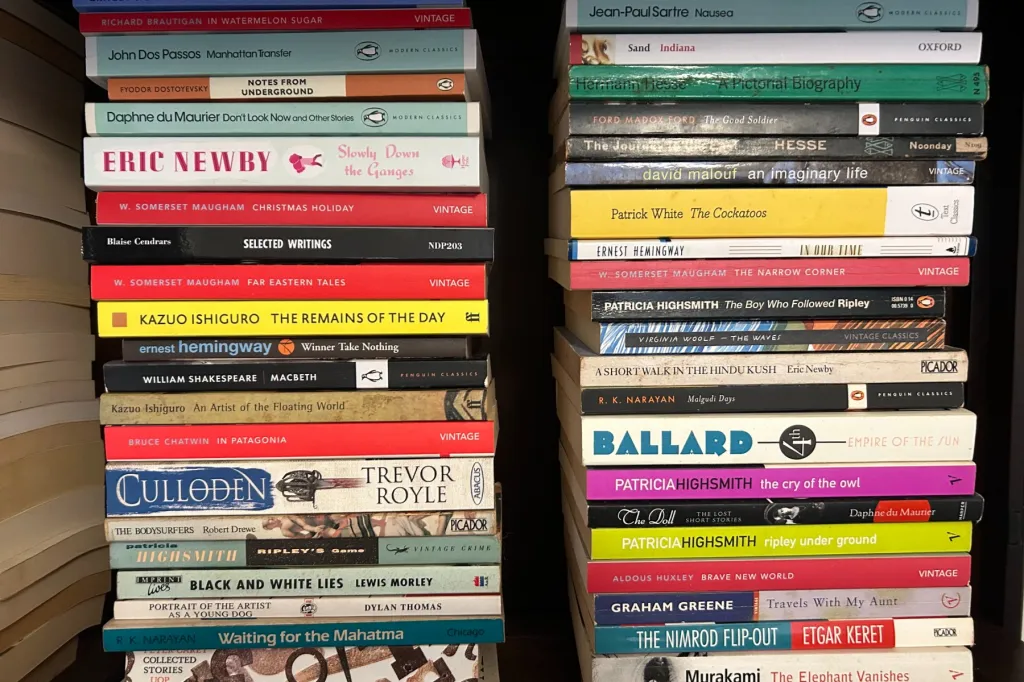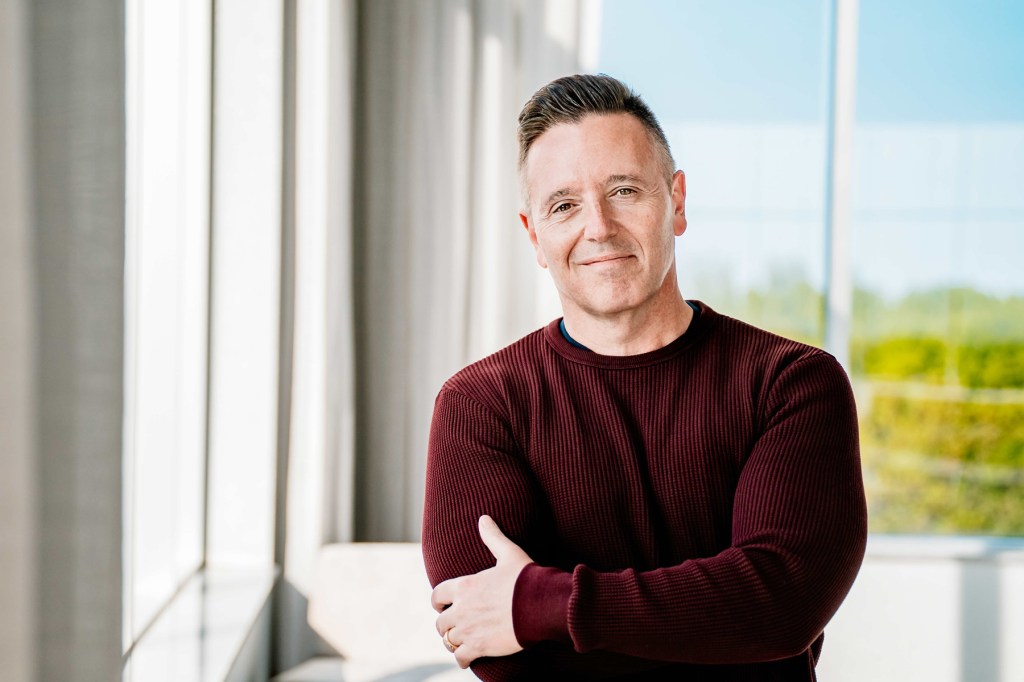‘Game-changer’ or ‘deliberately vague’? Unpacking the state’s new cultural policy
The state’s art sector has greeted a new cultural policy with cautious optimism, while querying a lack of detail.

On Monday morning the Lion Arts Centre courtyard was packed with representatives from across South Australia’s arts community — the kind of crowd you’d expect to see filling a theatre foyer on opening night, not bright and early on a Monday.
They were all there to hear Premier Peter Malinauskas and Arts Minister Andrea Michaels unveil the state government’s new, and long-delayed cultural policy, ‘A Place to Create’.
Pitched as an ambitious 10-year-plan, the crowd listened as the Premier floated Cold Chisel as the cure to toxic masculinity, highlighted Colonel William Light’s lesser-known painting career, and sought to hose down the ‘heightened division’ that has impacted the arts sector nationally.
“It fuels anxiety,” Malinauskas said. “It erodes hope. The greatest antidote to this poison is connection, and connection is the superpower of art, and that’s not rhetorical.”
Once the speeches concluded, and the website for the newly rebranded ‘Create SA’ went live, those assembled began poring over the long-awaited policy documents, which arrived around nine months behind schedule following an at-times contentious consultation process.
From the $15 million awarded to the Art Gallery of South Australia for a new winter series to the pointed absence of Tarrkarri, the stalled North Terrace Aboriginal arts and culture gallery, the new policy has sparked widespread discussion around the sector.
‘Game changer’
Speaking to InReview on Monday, Carclew CEO Mimi Crowe was “thrilled” by the focus on children and young people throughout the new policy, including a $2.5 million funding commitment.
“We can’t have a thriving arts community if we’re not supporting children and young people to have access to art, culture and creativity no matter where they’re from,” Crowe said.
“I think this will be a game changer for the next 50 years for South Australia.”
The Arts Industry Council of South Australia says it is still unpacking the policy with its members, but that the new budget allocations, while welcome, remained “opaque”.
You might like
“A positive aspect of the policy is the language around the value of cultural life, public good, inclusivity and accessibility, and the global thinking around areas like rights, climate change and artists’ livelihoods,” AICSA co-chair Emma Webb told InReview.
“AICSA also believes the delivery plans for the policy can be developed further and that this should include artform plans and initiatives. We look forward to the Government releasing the Artists at Work Taskforce report and its response to the Taskforce’s recommendations. Having been a member of the Taskforce, I know there was a great deal of thought put into this report by a panel of artworkers and artists, and there are in the report some progressive and specific recommendations that would benefit artists.”

‘Not as ambitious’
Sam Whiting, Senior Research Fellow at RMIT and part of the newly formed Australian Cultural Policy Research Association, says the new policy is in line with the sector’s expectations — if not its greatest ambitions.
“It’s not as ambitious as certainly some parts of the sector have been hoping for,” Whiting tells InReview.
“If everything that is outlined within the policy is actually implemented, it would be a considerable revamping of the sector. Unfortunately, the language is deliberately vague because they want to keep their options open in terms of what they deliver, what the timeline for delivery is, and what they prioritise.”
Whiting says the “piecemeal” document resembles a localised version of the federal government’s Revive arts policy with a handful of guiding pillars.
“The main one being access and inclusion, and also prioritising First Nations artists and cultural leadership. And then there’s also commitment there to more systemic funding for grassroots arts orgs, so small to medium sector.
“And that’s quite promising, but until we actually see a bit more detail around that, it’s hard to know.”
Whiting, who was also part of the state government’s Artists at Work Taskforce, noted that rising inflation has heightened the need for fresh support across the arts.
“Funding for the sector year to year, has not been indexed,” he says. “And obviously with inflation, that means essentially being cut, so there needs to be a substantial reinvestment.”
$13 million ‘new money’
Following Monday’s $80 million announcement, a spokesperson for the Arts Minister has since clarified that only $13 million of that number represents “new money” that will be appropriated in next year’s budget. The remainder of the $80 million figure highlighted on Monday encompasses previously announced projects and initiatives such as the $5 million-per-year arts investment fund announced in the 2024-2025 state budget and a partnership between the South Australian Film Corporation and ABC to support more local screen content.
The $35 million Adelaide Festival Centre upgrade, however, is not included in the new policy.
Speaking to the media on Monday, the Premier addressed perceptions that the government prioritised sporting events over the arts, stating that the overall “$157 million” the state government had allocated to the arts since taking office “eclipses what we spend on Gather Round and LIV Golf”.
Subscribe for updates
While wary of pitting the arts against sports, Whiting says the comparison doesn’t quite capture the full picture.
“The true comparison, would be how much we invest in communities, in all sports, from community football clubs all the way up to LIV Golf and Gather Round, so it would be literally the whole ecosystem of development and support.”
‘Cruel cuts’
The state opposition meanwhile has criticised the policy’s omission of Tarrkarri and the “cruel cuts” to the South Australian Museum and “finalisation of the critical Cultural Institutions Storage Facility”.
Last September the state government allocated an additional $4.1 million to the museum after canning a controversial restructure proposal, while on Monday the Premier insisted the “dream” of Tarrkarri was still alive and had already secured additional non-government funding for the project that was still to be announced.
As for the Cultural Institutions Storage Facility, InReview can now confirm that work is “well underway” and expected to be completed by the end of 2025. It seems the high-value nature of the project’s future holdings go some way to explaining the project’s secret location and limited public profile.
Tandanya shows signs of life
The Tarrkarri question might have dominated Monday’s conversations, but page seven of the ‘A Place to Create’ delivery plan does include a reference to “Supporting Tandanya National Aboriginal Cultural Institute’s ongoing operational and programming capacity, including reopening to the community”.
The centre has been closed to the public since 2023. Last year InDaily reported that the state government would spend $780,000 making repairs to the “visibly tired” Grenfell Street building with a planned 2025 reopening date.
While the venue recently re-opened its café for a series of pop-up gigs during the Adelaide Fringe, this week the Tandanya Facebook page celebrated this latest shout-out, stating that the new plan would be “vital support to sustain our operations, develop programming, and work towards reopening our doors to the community”. InReview has reached out to Tandanya’s board for further comment.
Next steps
For now, the AICSA is preparing its response to the proposed Arts, Culture and Creative Industries Bill 2025, announced on Monday and currently out for consultation. The National Association of Visual Artists also praised the move to legislate.
“This is a welcome and encouraging step for the arts in South Australia,” said NAVA Executive Director Penelope Benton said in a statement. “By moving to enshrine the value of arts and culture in law, the Government is showing a clear commitment to the role creativity plays in public life.”
Tully Barnett, an Associate Professor in Creative Industries at Flinders University, says the proposed legislation is a promising start for protecting artist’s freedom of speech and independence from political interference, with its declaration that “all artists, makers and creatives in South Australia have the right to freedom of artistic expression and creativity”
Barnett also notes that, according to Monday’s announcement, only a relatively small amount of funding appears to be channelled through peer-reviewed grants programming.
“There’s a heightened awareness now about the importance of arm’s-length, peer review, so that’s something to be mindful of.”
Looking ahead, Barnett says the the 10-year-scope of the plan — extending beyond a single election cycle — was a positive. But while the government has responded to the sector’s calls for new funding, it remains to be seen if this package can provide the kind of visionary impact needed across the wider arts ecosystem.
“What they’ve done is give a little bit to a lot of people, and quite a bit to the top end of town, the Art Gallery,” Barnett explains.
Submissions for the Arts, Culture and Creative Industries Bill 2025 close April 27.
Read the full ‘A Place to Create’ policy and delivery plan here.

